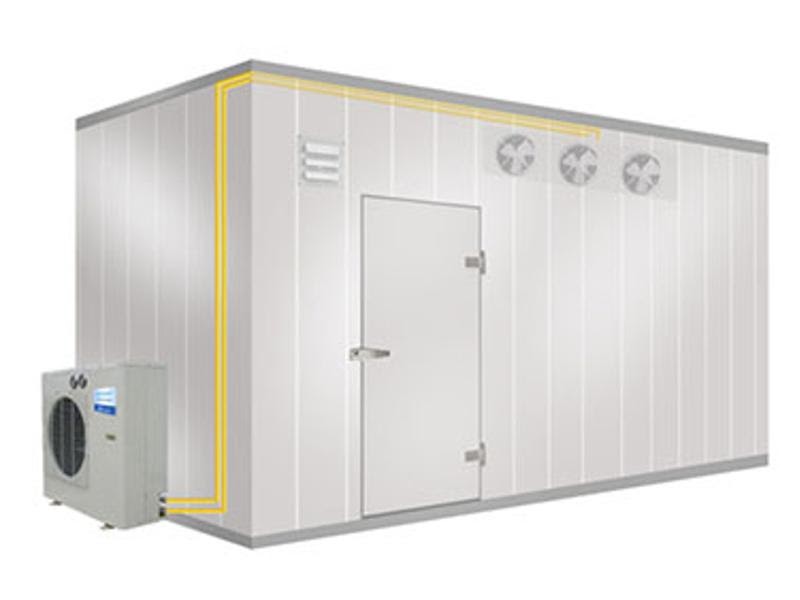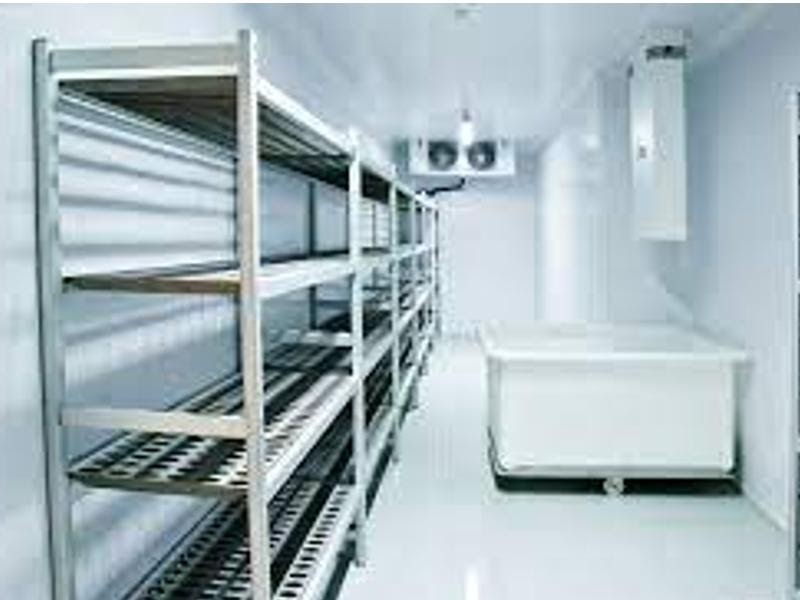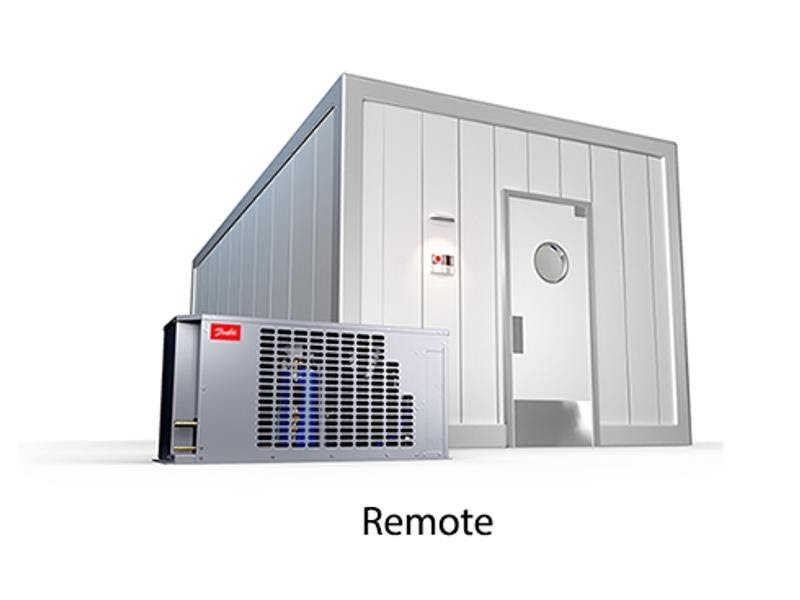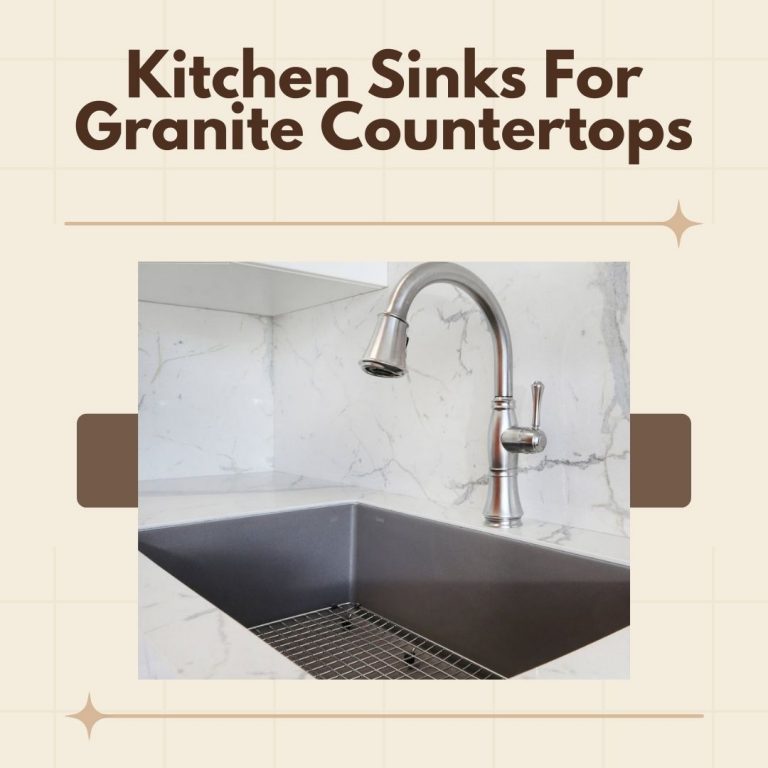How To Choose A Walk In Fridge

Are you starting up a food business and planning to purchase a walk in fridge for your company? This post should help you decide on choosing the best walk in refrigerator. Read on.
What Is A Walk In Refrigerator
A walk-in fridge is an insulated, enclosed, and with a very large space equipment used to store frozen food and other perishable products. Constructed in custom sizes, walk-in cooler is often used in the food sales industry and food service such as restaurants, convenience stores, and others. It can be installed indoors or outdoors.
Depending on the refrigeration equipment sizes, prices may range from $1,000 up to $10,000. Many models also cost more than that. A walk-in refrigerator may have the size of 15’ x 15’ dimensions that range hundreds of thousands in square feet. The space inside the walk in freezer should be enough to accommodate large quantities of food items and bulk ingredients.
Considering these figures, purchasing this type of refrigeration equipment needs a thorough contemplation. Additionally, delivery, installation, maintenance, and energy costs are quite lavish, so you should choose the best walk-in cooler according to your needs.
When choosing a cooler for your business, you need to consider the type of food you plan to store. If your business requires you to accommodate large quantities of food and ingredients, then choose the one with a bigger size and with a more powerful refrigeration system.
This article should help you decide on choosing the best walk-in cooler essential for your food business. We will tackle the different types of walk-in refrigerators or walk-in coolers, the characteristics a good unit has, and the factors you need to consider when buying the best walk-in freezer.
Walk-in coolers are classified into two types. These coolers can be prefabricated or built-in.
2 Types Of Walk-In Refrigerators

Prefabricated Walk-Ins
Prefabricated Walk-In coolers or refrigerators are units that are made from premade urethane panels. They typically come in set layouts and sizes, making them easy to set up, easy to expand, and easy to reposition.
Advantages of Prefabricated Walk-Ins
- Budget-friendly – Installation fees are less expensive and fewer contractor/manpower is needed.
- The units are flexible – configuration is adjustable anytime change is needed as your business progresses.
- Less interruption to your business.
Disadvantages of Prefabricated Walk-Ins
- Configurations and sizes are limited.
- Durability is slighter compared to built-in coolers.

Built-in Walk-Ins
Built-in walk-in coolers are built according to your exact needs. The units use insulation enclosed by structural tiles on both walls and floors. As the name implies, manufacturers will build your coolers with cold storage that will fit your kitchen space. Basically, built-in walk-in freezers or coolers can be of any size.
Advantages Of Built-in Walk-Ins
- Can be customized according to your needs
- Can be of different sizes
Disadvantages of Built-in Walk-Ins
- More expensive to build compared to Prefabricated units.
- Hard to change or expand to fit in your business growth
Though walk-in coolers vary in sizes, designs, and accessories, they all have similar components. Let’s get to know these parts.
Different Parts Of Walk-In Coolers
(1) Walk-In Cooler Panels
Panels contain insulation foam stuffed between thin metal sheets, called the “skin”. These panels help keep the fridge cold and operate efficiently. Panels can be made of galvalume, galvanized steel, painted galvanized, aluminum, and stainless steel.
Galvalume is a type of galvanized steel coated with a skin of aluminum. It is known to be the most common panel for walk-in refrigerators. Unlike plain galvanized steel, galvalume is not prone to corrosion and rusting. It has a minimum thickness of 26 gauge, and is more tough, durable, and dent-resistant than aluminum.
Galvanized steel is not that durable compared to other skins, and is prone to develop rust when exposed to moisture. Walk-in refrigerators and freezers should have a minimum galvanizing of G90 for a strong and more dent-resistant panel. This skin typically has a gauge of not less than 26 for both walls and ceiling, and between 16 and 20 for floors. Installation of quarry tile over the floor is required by the NSF for walk-in units with galvanized steel panels.
Painted Galvanized is a type of panel or skin that is more corrosion-resistant. Its extra coat of paint adds defense against rusting. Painted galvanized finish also allows the owner to customize the unit with the color of their choice. Thus, this makes it more expensive than galvalume.
Aluminum is a type of panel that is all-around good corrosion resistant. To provide sufficient strength to the walk-in unit, the aluminum skin should be thicker, at least 40 mm to 60 mm in thickness for both wall and ceiling, and between 100 to 120 mm for the floor. If you are on a tight budget, you can choose aluminum as it is cheaper compared to other materials.
Stainless steel is the most ideal panel for walk-in freezers, either for indoor or outdoor use. It is because it is the strongest finishing material with higher corrosion resistance. Thus, the most expensive walk-ins are those with stainless steel panels.
To maintain a colder temperature, select a cooler with thicker panels.
(2) Floors
If you will purchase a walk-in cooler or freezer for your business, you have the option to order a unit with or without a floor. If you choose the unit with floor included, it is ideal to select one made from smooth aluminum as it is good for all-around use. It is also easier to install compared to a custom floor.
On the other hand, a floorless unit is recommended if you will be using heavy shelving units on the ground. Doing so will enable you to choose and install a ground-contact concrete floor to hold these denser loads.
If the area where your walk-in unit will be located is in an uninsulated area or above the basement, it is best to use insulated flooring to seal cold air inside and keep hot air out. This approach reduces the risk of having strain on your compressor and avoids condensation that may cause slipping hazard and damage to your box.
(3) Doors
The door is the most used part of the walk-in cooler. It gives the relevant function providing staff access to the unit, at the same time, preventing the cold air inside from going out. Being said, walk-in doors must be manufactured having the ability to hold out against overuse.
You can consider buying a door with a self-closing mechanism to ensure that your walk-in can’t be accidentally left unclosed, and to ensure that the cooler’s temperature is maintained. This will also prevent your product from getting spoiled and having a damaged refrigeration system.
You can also select doors with locks to secure your food stock or the ones with small windows inside the cooler.
(4) Walk-In Refrigeration Systems

Self-Contained Refrigerators
Self-Contained refrigeration system house both condenser and evaporator inside the unit itself, similar to a window air-conditioned unit. There are almost 90% of self-contained refrigerators used in commercial kitchens.
The condenser can either be found on top or at the bottom of the cooler. There are also self-contained refrigerators with condensers found at the sides or at back of the unit. Meanwhile, the evaporator is consistently found on the top of the commercial cooler.

Remote Condensing Walk-Ins
A remote refrigeration system consists of an inclosed cabinet designed for cold food storage. The unit has a ductwork built in and an evaporator.
The condenser and compressor of a remote condensing unit can be found in a separate unit attached to the box with a pair of lines that transfer cooling-system connecting the two.
The evaporator coil is usually located inside the remote walk-in unit while the cooler or freezer is on a roof or outside a building. Remote condensing walk-ins can also have multiple evaporators.

Multiplex Walk-Ins
Multiplex refrigeration systems utilize least outdoor condensing units or OCUs. This is to provide cooling for multiple attachments such as walk-in coolers, display cases, freezers, and ice-making heads and use a centralized system. They are consistently built directly into the buildings they work for.
For efficient management, these walk-in units were constructed with insulated floors, walls, and ceilings. These coolers are usually used as restaurant equipment and can also be found in most supermarkets.
Walk-in coolers come in different shapes and sizes, so do their air conditioners. The larger the dimensions of the walk-in cooler, the bigger the size of the air-conditioner.
(5) Walk-In Cooler Accessories
Strip curtains can help keep the cold and hot air inside. This also gives extra barriers to prevent insects from coming in. They are typically overlapping strips of either clear or tinted PVC having over the door.
Supplemental Air Circulation system allows the box to captivate air when the outside temperature becomes colder than the inside.
Shelves enable you to efficiently organize refrigerated foods and ingredients. Epoxy-coated wire shelves are ideal as they are not prone to water damage or rust, and are more durable compared to other shelves.
Thermometers will help you keep monitor the walk-in’s interior temperature.
Alarm systems are usually found in new models of walk-ins. The freezer will alarm when there’s a sudden rise in interior temperature or the door is left open in a long period of time.
Things To Know About Walk-In’s Deliver and Installation
To avoid business operation and workflow disruptions, here are the tips that you should do before the delivery and installation:
-schedule the delivery during slow periods or off days.
-prepare your staff by notifying them ahead of time
-in case the installation will impact your staff’s workflow temporary, address it right away
-read and watch installation videos ahead of time to give you ideas on how to assemble the walk-in cooler as well as program the refrigeration system without the help of a professional or a tech.
Tips to Save on Your Energy Bill while Having a More Energy-Efficient Cooler
- Coolers must be installed on insulated floors, having thermal barriers below each wall panel. Doing so will reduce temperature transfer while the cooler operates more efficiently.
- Make sure that panels are properly installed to avoid leaking.
- Shelving designs must be the ones with less obstructions that will allow air to freely flow around the cooler.
- Use LED lighting as these use less energy, but last longer compared to other bulbs.
Maintenance Tips
For future reference, here are the cleaning, sanitation, and maintenance tips you can use so that your walk-in freezer will last long.
-used approved cleaning solution when cleaning and sanitizing your walk-in cooler or freezer. You can use Arctic Klene freezer cleaner or 4 oz of bleach mixed in a gallon of water. Make sure to use safety gears like gloves and protective glasses when cleaning your walk-in.
-remove dirt and debris from your door seal to extend its life and as well as the gaskets.
-Regularly clean the condenser coils to avoid compressor damage and refrigeration system failure.
So that covers everything. I hope that this article has helped you one way or another. Please show us your support by sharing this post. Thank you for reading!





